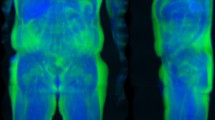Abstract
Deep learning has attracted increasing attention in brain imaging, but many neuroimaging data samples are small and fail to meet the training data requirements to optimize performance. In this study, we propose a deep transfer learning network based on Optimal Mass Transport (OMTNet) for 3D brain image classification using MRI scans from the UK Biobank. The major contributions of the OMTNet method include: a way to map 3D surface-based vertex-wise brain shape metrics, including cortical thickness, surface area, curvature, sulcal depth, and subcortical radial distance and surface Jacobian determinant metrics, onto 2D planar images for each MRI scan based on area-preserving mapping. Such that some popular 2D convolution neural networks pretrained on the ImageNet database, such as ResNet152 and DenseNet201, can be used for transfer learning of brain shape metrics. We used a score-fusion strategy to fuse all shape metrics and generate an ensemble classification. We tested the approach in a classification task conducted on 26k participants from the UK Biobank, using body mass index (BMI) thresholds as classification labels (normal vs. obese BMI). Ensemble classification accuracies of 72.8 ± 1.2% and 73.9 ± 2.3% were obtained for ResNet152 and DenseNet201 networks that used transfer learning, with 5.4–12.3% and 6.1–13.0% improvements relative to classifications based on single shape metrics, respectively. Transfer learning always outperformed direct learning and conventional linear support vector machines with 3.4–8.7% and 4.9–6.0% improvements in ensemble classification accuracies, respectively. Our proposed OMTNet method may offer a powerful transfer learning framework that can be extended to other vertex-wise brain structural/functional imaging measures.
Access this chapter
Tax calculation will be finalised at checkout
Purchases are for personal use only
Similar content being viewed by others
References
Rashid, B., Calhoun, V.: Towards a brain-based predictome of mental illness. Hum. Brain Mapp. 41, 3468–3535 (2020)
Vieira, S., Pinaya, W.H.L., Mechelli, A.: Using deep learning to investigate the neuroimaging correlates of psychiatric and neurological disorders: Methods and applications. Neurosci. Biobehav. Rev. 74, 58–75 (2017)
Pan, S.J., Yang, Q.A.: A survey on transfer learning. IEEE Trans. Knowl. Data Eng. 22, 1345–1359 (2010)
Dale, A.M., Fischl, B., Sereno, M.I.: Cortical surface-based analysis - I. Segmentation and surface reconstruction. NeuroImage 9, 179–194 (1999)
Fischl, B., Sereno, M.I., Dale, A.M.: Cortical surface-based analysis - II: inflation, flattening, and a surface-based coordinate system. NeuroImage 9, 195–207 (1999)
He, K., Zhang, X., Ren, S., Sun, J.: Deep residual learning for image recognition. In: IEEE Conference on Computer Vision and Pattern Recognition (CVPR). IEEE, Las Vegas (2016)
Huang, G., Liu, Z., Maaten, L.v.d., Weinberger, K.Q.: Densely connected convolutional networks. In: IEEE Conference on Computer Vision and Pattern Recognition (CVPR), Honolulu, HI, USA. IEEE (2017)
Gu, X., Yau, S.-T.: Computing conformal structures of surfaces. Commun. Inf. Syst. 2, 121–146 (2002)
Su, Z., Zeng, W., Shi, R., Wang, Y., Sun, J., Gu, X.: Area preserving brain mapping. In: IEEE Conference on Computer Vision and Pattern Recognition, Portland, OR, USA. IEEE (2013)
Gutman, B.A., Wang, Y., Rajagopalan, P., Toga, A.W., Thompson, P.M.: Shape matching with medial curves and 1-D group-wise registration. In: IEEE International Symposium on Biomedical Imaging (ISBI), pp. 716–719, Barcelona, Spain (2012)
Gutman, B.A., et al.: Medial demons registration localizes the degree of genetic influence over subcortical shape variability: An N = 1480 meta-analysis. In: IEEE International Symposium on Biomedical Imaging (ISBI), pp. 1402–1406, New York, NY, USA (2015)
Miller, K.L., et al.: Multimodal population brain imaging in the UK Biobank prospective epidemiological study. Nat. Neurosci. 19, 1523–1536 (2016)
Yeo, B.T.T., et al.: The organization of the human cerebral cortex estimated by intrinsic functional connectivity. J. Neurophysiol. 106, 1125–1165 (2011)
Raji, C.A., et al.: Brain structure and obesity. Hum. Brain Mapp. 31, 353–364 (2010)
Ho, A.J., et al.: The effects of physical activity, education, and body mass index on the aging brain. Hum. Brain Mapp. 32, 1371–1382 (2011)
Funding
LLZ was supported in part by the National Natural Science Foundation of China Grant 61722313, Fok Ying Tung Education Foundation Grant 161057, and Science & Technology Innovation Program of Hunan Province Grant 2018RS3080; CRKC, PMT, and SIT were supported in part by NIH Grant U54 EB020403, R01 MH116147, R56 AG058854, P41 EB015922, and R01MH111671; CRKC was supported by NIA T32AG058507. CRKC, NJ, and PMT received partial research support from Biogen, Inc. (Boston, USA). DWH was supported by the National Key Research and Development Program of China Grant 2018YFB1305101.
Author information
Authors and Affiliations
Corresponding author
Editor information
Editors and Affiliations
Rights and permissions
Copyright information
© 2020 Springer Nature Switzerland AG
About this paper
Cite this paper
Zeng, LL. et al. (2020). A Deep Transfer Learning Framework for 3D Brain Imaging Based on Optimal Mass Transport. In: Kia, S.M., et al. Machine Learning in Clinical Neuroimaging and Radiogenomics in Neuro-oncology. MLCN RNO-AI 2020 2020. Lecture Notes in Computer Science(), vol 12449. Springer, Cham. https://doi.org/10.1007/978-3-030-66843-3_17
Download citation
DOI: https://doi.org/10.1007/978-3-030-66843-3_17
Published:
Publisher Name: Springer, Cham
Print ISBN: 978-3-030-66842-6
Online ISBN: 978-3-030-66843-3
eBook Packages: Computer ScienceComputer Science (R0)





